Themed collection Covalent organic frameworks and organic cage structures

Covalent organic frameworks and organic cage structures
Welcome to this CrystEngComm themed issue entitled “Covalent Organic Frameworks and Organic Cage Structures”.

CrystEngComm, 2017,19, 4866-4867
https://doi.org/10.1039/C7CE90115A
Pore wall fluorescence labeling of covalent organic frameworks
A novel covalent organic framework (COF) based on terphenyldiboronic acid exhibiting open pores of about 4.1 nm is presented. The pore walls of the COF could be functionalized with a fluorescent dye.
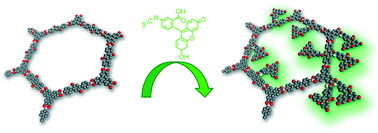
CrystEngComm, 2017,19, 4886-4891
https://doi.org/10.1039/C7CE00684E
Experimental and theoretical insight into the effect of fluorine substituents on the properties of azine linked covalent organic frameworks
Herein we report a combined experimental and computational study on the effect of fluorine atom incorporation on the materials properties of azine-linked COFs.
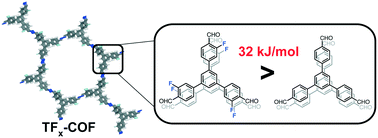
CrystEngComm, 2017,19, 4882-4885
https://doi.org/10.1039/C7CE00598A
Construction of two heteropore covalent organic frameworks with Kagome lattices
Two novel covalent organic frameworks (COFs) bearing Kagome lattices have been fabricated through the condensations of a D2h symmetrical tetraaldehyde and C2 symmetrical aromatic diamines of various lengths.
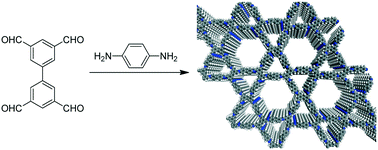
CrystEngComm, 2017,19, 4877-4881
https://doi.org/10.1039/C7CE00590C
Flexible monomer-based covalent organic frameworks: design, structure and functions
A new flexible monomer-based COF has been designed and synthesized and its structure and gas adsorption properties have been carefully investigated.
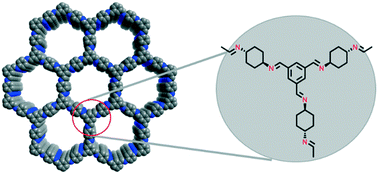
CrystEngComm, 2017,19, 4868-4871
https://doi.org/10.1039/C7CE00593H
Sub-micron spheres of an imine-based covalent organic framework: supramolecular functionalization and water-dispersibility
Sub-micron spheres of an imine-based COF are formed in a fast and simple reaction and functionalized to increase its water dispersibility framework (sRT-COF-1).
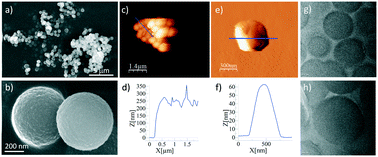
CrystEngComm, 2017,19, 4872-4876
https://doi.org/10.1039/C6CE02200F
Modular assembly of porous organic cage crystals: isoreticular quasiracemates and ternary co-crystal
Co-crystallisation of helically chiral porous organic cage molecules has enabled the formation of isoreticular quasiracemates and a rare porous organic ternary co-crystal.
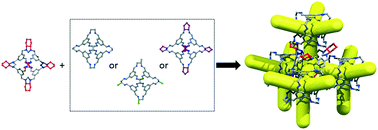
CrystEngComm, 2017,19, 4933-4941
https://doi.org/10.1039/C7CE00783C
A quaternary-ammonium-functionalized covalent organic framework for anion conduction
A new anion conducting covalent organic framework (COF) was prepared by covalently tethering quaternary ammonium (QA) ions onto the pore walls of COF 1,3,5-triformylphloroglucinol-o-tolidine (TpBD-Me) through bromination and quaternization.
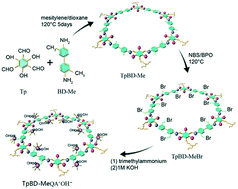
CrystEngComm, 2017,19, 4905-4910
https://doi.org/10.1039/C7CE00042A
Selective binding in different adsorption sites of a 2D covalent organic framework
Monolayer covalent organic frameworks selectively bind fullerenes and trichlorobenzene at different sites via different types of interactions.
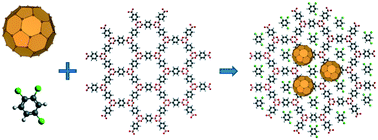
CrystEngComm, 2017,19, 4927-4932
https://doi.org/10.1039/C7CE00263G
Isoreticular covalent organic frameworks for hydrocarbon uptake and separation: the important role of monomer planarity
We report three isoreticular covalent organic frameworks (COFs) sharing identical two-dimensional layered structures but with different planarity of the building monomers, leading to various crystallinities, porosities and hydrocarbon uptake and separation performances.
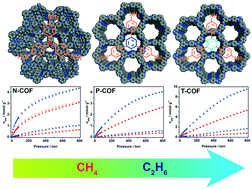
CrystEngComm, 2017,19, 4899-4904
https://doi.org/10.1039/C7CE00344G
Computational screening of covalent organic frameworks for the capture of radioactive iodine and methyl iodide
Large-scale computational screening results show that COFs are promising materials for the capture of radioactive iodic contaminants from nuclear wastes.
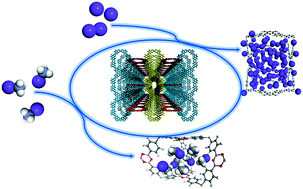
CrystEngComm, 2017,19, 4920-4926
https://doi.org/10.1039/C7CE00118E
Precise elucidations of stacking manners of hydrogen-bonded two-dimensional organic frameworks composed of X-shaped π-conjugated systems
Stacking manners of 2D-nCOFs with a porous rhombic network framework was precisely characterized based on single crystal X-ray diffraction analysis.
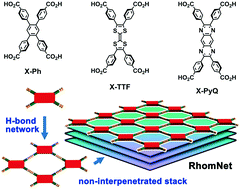
CrystEngComm, 2017,19, 4892-4898
https://doi.org/10.1039/C7CE00183E
Solid-state inclusion of C60 and C70 in a co-polymer induced by metal–ligand coordination of a Zn–porphyrin cage with a bis-pyridyl perylene derivative
We have conducted X-ray characterization of two unprecedented supramolecular solids involving three different components: a suitable Zn(II)–bisporphyrin cage, a bis-pyridyl perylene derivative and a fullerene.

CrystEngComm, 2017,19, 4911-4919
https://doi.org/10.1039/C6CE02341J